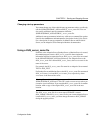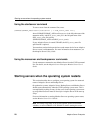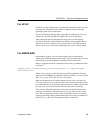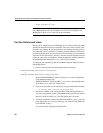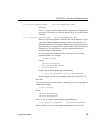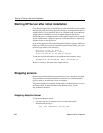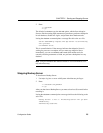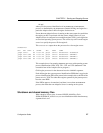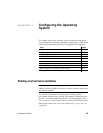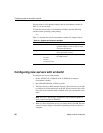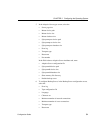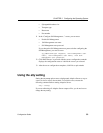
CHAPTER 2 Starting and Stopping Servers
Configuration Guide 27
kill pid
where pid is the process identification of any dataserver or backupserver
process, as determined by the
showserver command. Killing one engine for a
particular Adaptive Server kills all engines for that server.
If more than one Adaptive Server is running on the same system, be careful that
the engine you kill is associated with the correct Adaptive Server. If your
Adaptive Server is configured to use multiple engines (CPUs), each engine has
an associated operating system process. The correct way to kill a multi-engine
server is to specify the process ID for engine 0.
This
showserver output shows the processes for a four-engine server:
showserver
UID PID PPID C STIME TTY TIME COMD
jorge 3320 1 80 10:31:40 pts/4 302:15 dataserver -dteamster
jorge 3321 3320 80 10:31:45 pts/4 324:47 dataserver -ONLINE:1
jorge 3322 3320 80 10:31:45 pts/4 326:02 dataserver -ONLINE:2
jorge 3323 3320 80 10:31:45 pts/4 328:56 dataserver -ONLINE:3
This example shows four running dataserver processes with operating system
process identifications (PID) 3320, 3321, 3322, and 3323 (
dataserver is the
executable form of the Adaptive Server program.)
Child engine processes for the dataserver have the
-ONLINE: argument.
Each child engine has a parent process identification (PPID) that is equal to the
process identification (PID) of the parent. In the example above, the PID of the
parent server is 3320. The other three engines spawned by the parent process
have the same PPID.
If the PPIDs appear to be unrelated, and there is more than one
dataserver
process, then more than one Adaptive Server is running on the system.
Shutdown and shared memory files
When Adaptive Server starts, it creates SERVER_NAME.krg file in
$SYBASE/$SYBASE_ASE directory to store information about shared memory
segments that it uses.



